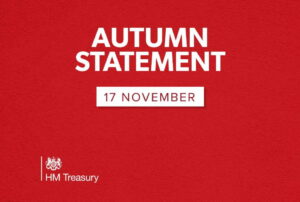This is a summary of the impacts of the Growth Budget on personal tax matters.
National Insurance
As announced yesterday, prior to the so-called “mini-budget”, National Insurance Contributions will be reduced back to the pre-6 July rates of 12% and 2% respectively as of 6 November 2022. This was always due to be implemented at the beginning of the next tax year, however the Chancellor has brought this forward by five months.
We have now also had the confirmation of the cancellation of the introduction of the Health and Social Care Levy, which was designed to support the NHS and equivalent bodies across the UK. These changes are forecasted to save 28 million taxpayers an average of £330 per year, and will save businesses an average of £9,600, too.
Whilst, this looks set to reduce revenue by nearly £17 billion next fiscal year, the Chancellor has advised that the NHS will still receive the same level of funding.
Income tax
Another tax cut that has been expedited is the proposed cut in the basic rate of Income Tax, which has been brought forward by a year, becoming effective as of 6 April 2023. The rate of 19% will also apply to non-savings and non-dividend income for English, Welsh, and Northern Irish taxpayers keeping on average £170 more in the pocket of taxpayers each year.
As Gift Aid payments to Charities are based on the basic rate of tax and a reduction could directly impact their funding, the Treasury have increased the three year transition period to four years, maintaining the tax relief at 20% until April 2027. This provides additional support for the Third Sector within a difficult period, but may also allow for tax planning opportunities for individuals.
Furthermore, what was the highest rate of Income Tax, the Additional Rate of 45% will be abolished across all income for individuals in England, Wales and Northern Ireland from April 2023. The Additional Rate applied to income in excess of £150,000. The change is also effective to the rates applied to savings, dividend, and any other income above £150,000 that is not subject to the Scottish rates of income tax in Scotland.
Current additional rate taxpayers will also now benefit from the Personal Savings Allowance of £500 which higher rate taxpayers are able to utilise, with 0% tax on the first £500 of savings income.
Much like changes to National Insurance, the 1.25% increase in dividend tax rates have also been cancelled with effect from April 2023, mirroring the cancellation of the Health and Social Care Levy. This looks to benefit 2.6 million dividend taxpayers with an average saving of £345.
There seems to be a number of ways that this Growth Plan seeks to put more money into the pockets of individuals, however without any changes to the tax thresholds and personal allowance, the proportion of income that workers will take home may not be as generous as it first seems especially in light of the current levels of inflation.
It is also worth noting, the spread of the tax implications announced today in the Growth Plan. The changes mean that those earning a salary of £250,000 a year will have £8,345 extra in their pockets after tax and NIC changes, whereas those earning £25,000 receive less benefit at around £280 overall. The plan of the new Government appears to be grow the economy by encouraging reinvestment by businesses and individuals alike to help fund the borrowing that will be required to cover the support being made available.
Stamp duty land tax
This wasn’t a huge surprise due to a leak earlier in the week. As of today, the government will double the threshold above which Stamp Duty Land Tax (SDLT) must be paid on the purchase of residential properties in England and Northern Ireland from £125,000 to £250,000. The government’s aim is to reduce the tax burden on people buying homes.
Potential tax saving for a standard home mover
| Price | Pre Budget | Post budget | Saving |
|---|---|---|---|
| £200,000 | £1,500 | £0 | £1,500 |
| £400,000 | £10,000 | £7,500 | £2,500 |
| £600,000 | £20,000 | £17,500 | £2,500 |
Furthermore, an increase of the relief that first-time buyers can receive will increase from £300,000 to £425,000, and the maximum value of a property on which first-time buyer’s relief can be claimed will also increase, from £500,000 to £625,000.
Potential tax saving for a first time buyer
| Price | Pre budget | Post budget | Saving |
|---|---|---|---|
| £200,000 | £0 | £0 | £0 |
| £400,000 | £5,000 | £0 | £5,000 |
| £600,000 | £20,000 | £8,750 | £11,250 |
Remember first-time buyers can save for their deposit using a lifetime ISA. Up to £4,000 each year can be paid in and the government will add a 25% bonus to their savings, up to a maximum of £1,000 per year.
Higher rates of SDLT
Higher rates of SDLT are applied when a second property is purchased. This adds an additional 3% across the board to the normal rates of SDLT.
Unfortunately, the measure doesn’t go as far as reducing the higher rate of 3% on the purchase of second or subsequent dwellings. However, not all is lost, due to the nil rate band being increased to £250,000, second property buyers will save 2% on the cost between £125,001 to £250,000 which was previously taxed at 5%.
New rates for purchase subject to the higher rates
| Price | Pre Budget | Post budget | Saving |
|---|---|---|---|
| £200,000 | £1,500 | £0 | £1,500 |
| £400,000 | £10,000 | £7,500 | £2,500 |
| £600,000 | £20,000 | £17,500 | £2,500 |
Trust Tax
Since we have seen the additional rate of tax being abolished for individuals, we were hopeful that this would follow on to trusts. However, there is no official guidance to confirm the position as yet, but we will keep you posted.
If you have any questions for our Tax experts as a result of this mini-Budget, please contact us on 01242 776000 or tax@randall-payne.co.uk.



